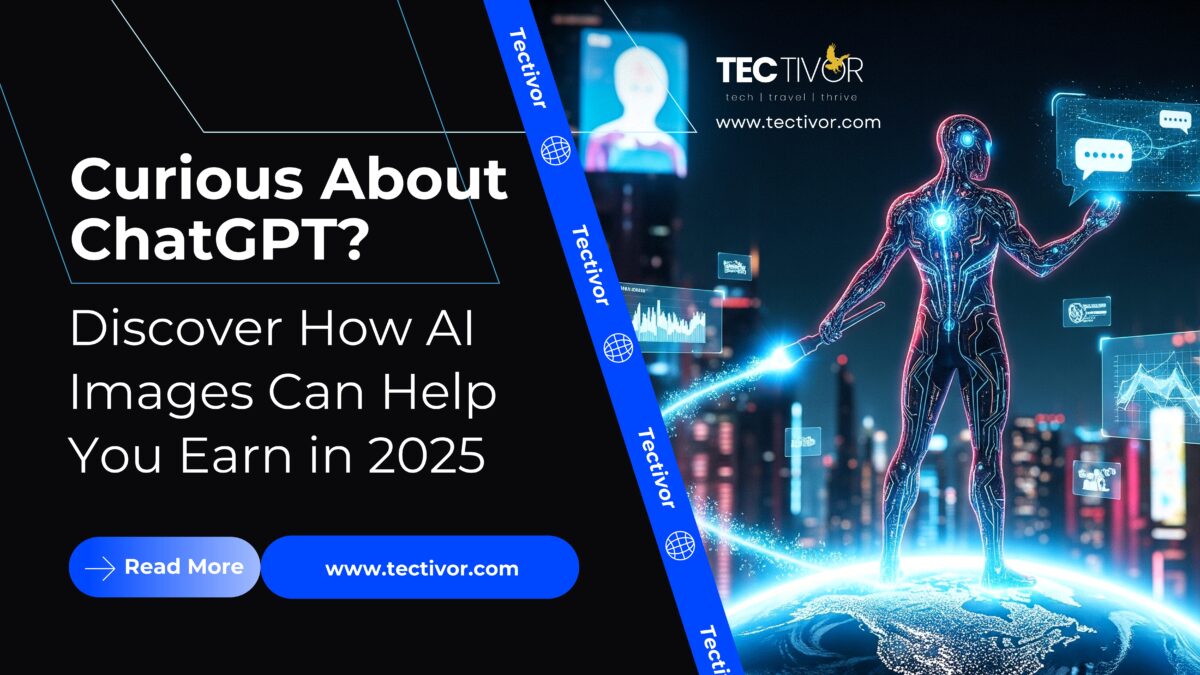Introduction: ChatGPT Curiosity Sparked a New Era
If you’ve ever typed a question into ChatGPT, you’ve already taken your first exciting step into the rapidly expanding world of artificial intelligence. Since its mainstream explosion, millions have explored the magic of AI for everything from writing compelling copy and debugging code to brainstorming creative ideas and even drafting intricate business plans. The possibilities seemed boundless for text-based tasks.
But here in 2025, AI is evolving at an astonishing pace, pushing beyond just words. A growing wave of curious creators, entrepreneurs, and side hustlers are now asking a more exciting question: How to make money with AI — even if you’re not a tech expert, a seasoned coder, or a professional designer?
The thrilling answer lies not just in AI conversations, but in AI creations — specifically, AI-generated images. This article will show you how to leverage your existing curiosity about AI into tangible income streams, making 2025 your year for visual success.
Table of Contents
From Chat to Cash: Why AI Images Are the Next Big Thing
ChatGPT truly revolutionized the way we interact with machines, making AI accessible and demonstrating its power to generate complex output from simple prompts. It’s a fantastic tool for generating words, ideas, and even structured data. However, the spotlight is now rapidly shifting to a new generation of AI tools that excel at creating stunning visuals. This shift democratizes visual content creation, making it accessible to everyone, not just those with years of design training or expensive software.
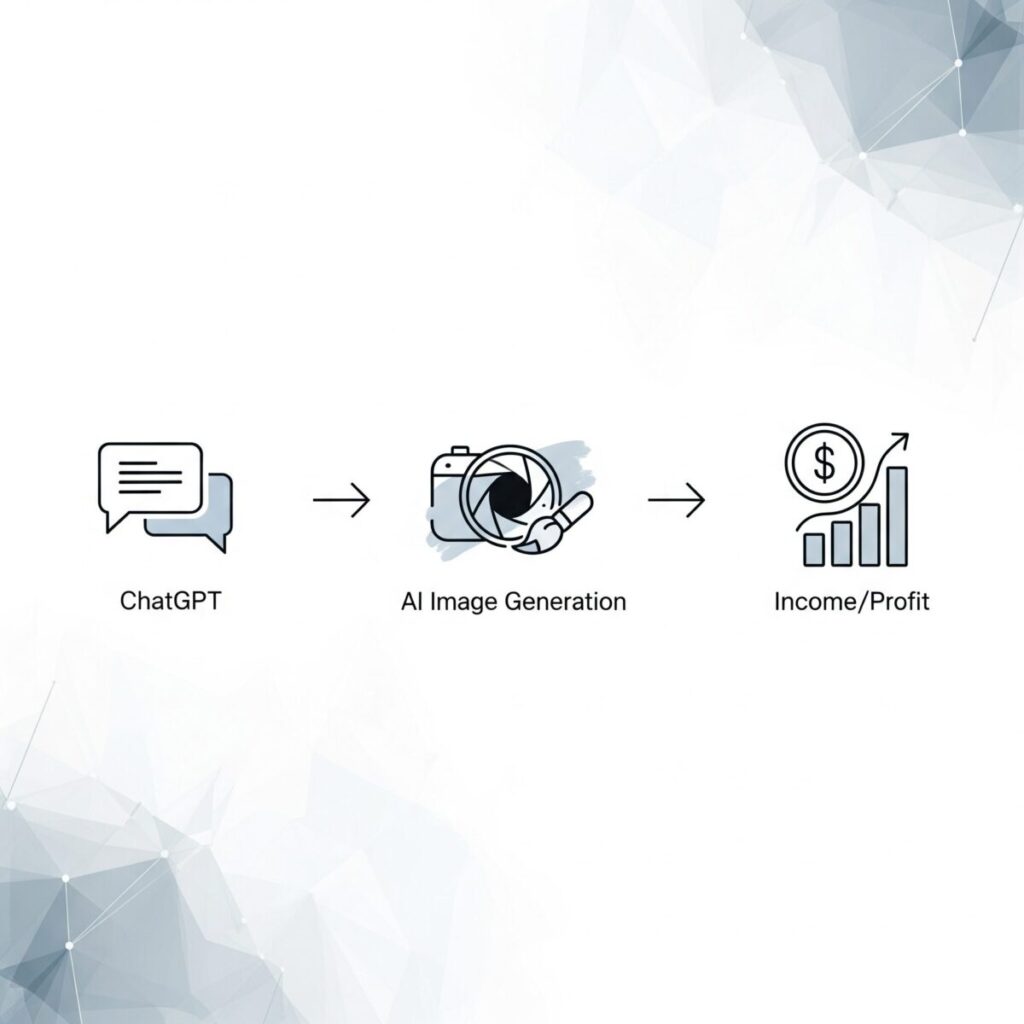
Imagine turning a simple text description like “a whimsical forest scene with bioluminescent mushrooms and a friendly dragon” into a high-resolution, unique image in seconds. This is the power of AI image generation. Platforms like DALL·E (now integrated directly into ChatGPT for Plus users), Midjourney (known for its artistic quality), Leonardo AI (popular for commercial applications), and Adobe Firefly (Adobe’s professional-grade offering) are making it incredibly easy to transform your imagination into stunning visuals using simple text prompts.
And here’s the crucial part: those captivating, unique images can be monetized in surprisingly diverse and profitable ways. This is where your AI curiosity can truly turn into cash.
What Are AI Image Tools and Why Are They Booming?
At their core, AI image generation tools use advanced machine learning models trained on vast datasets of images and text. When you provide a text “prompt,” the AI interprets your description and generates an original image that matches your vision. This process is called “text-to-image” generation.
The “boom” is happening for several key reasons:
New Possibilities: Google’s Gemini AI and newer models like DeepSeek AI are pushing the boundaries further. While ChatGPT excels at text, Gemini AI (especially its advanced versions) and DeepSeek are designed with multi-modal capabilities, meaning they can understand and generate not just text, but also images, audio, and even video. This makes them formidable competitors to ChatGPT, particularly for those looking to integrate visual and research-based content seamlessly.
Accessibility: You no longer need artistic skills or complex software. If you can type, you can create.
Speed & Scale: Generate dozens of unique image variations in minutes, a task that would take a human designer hours or days. This allows for rapid prototyping and iteration.
Cost-Effectiveness: Compared to hiring a graphic designer or photographer for every single image, AI tools are incredibly affordable, with many even offering free tiers to get started.
Unleashed Creativity: AI can help you visualize ideas that might be impossible or too expensive to create traditionally. From fantastical creatures to futuristic cityscapes, your imagination is the only limit.
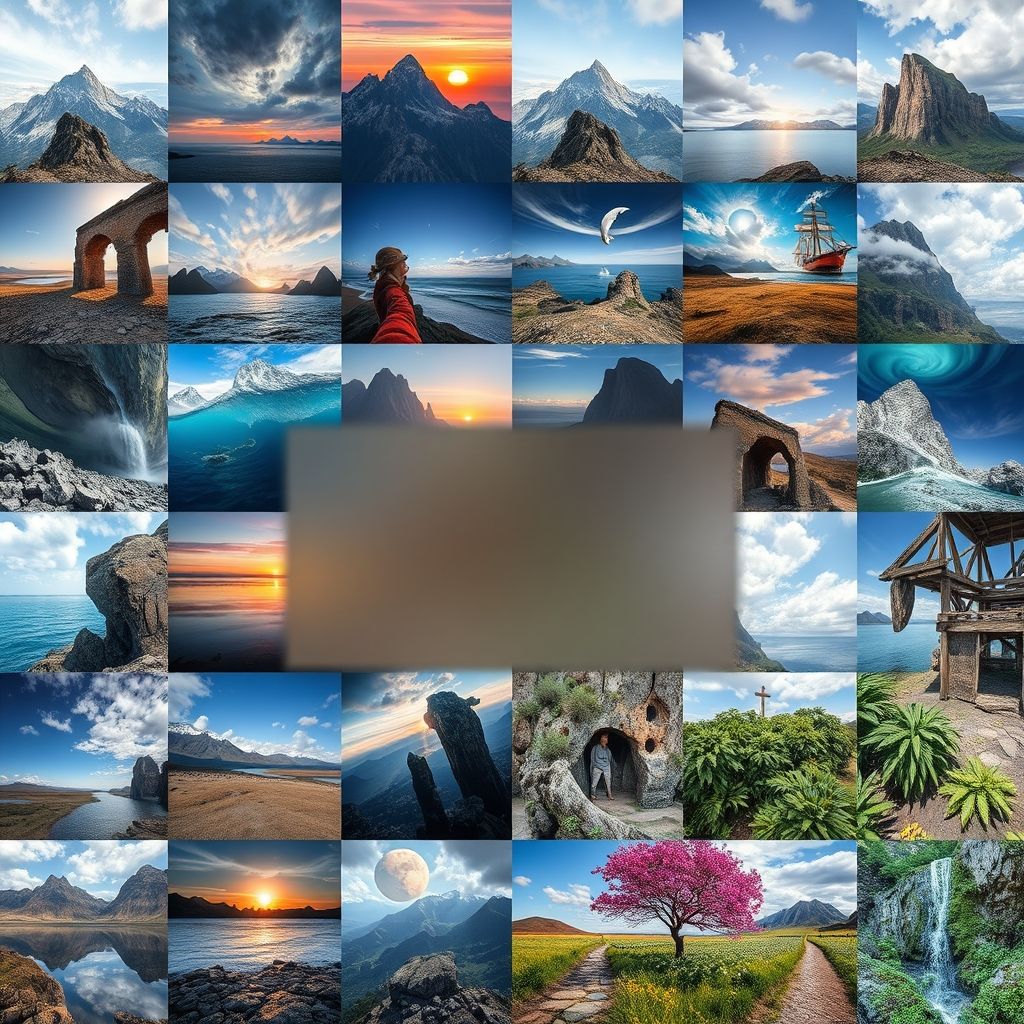
How to Make Money with AI (Even If You Can’t Draw)
Here’s a deeper dive into how creators, freelancers, and smart side hustlers are turning AI-generated images into real income:
- Print-on-Demand (POD) Products: Your Automated Product Line
- Concept: Design unique AI art and place it on physical products like T-shirts, mugs, phone cases, posters, tote bags, or journals. When a customer orders, the POD company handles printing, shipping, and customer service. You just upload the design and collect a royalty.
- Platforms: Redbubble, Teespring (now Spring), Printful, Printify, and Etsy (integrated with POD services).
- Benefit: This is pure passive income once your designs are uploaded. Some sellers report earning thousands per month by consistently uploading unique, AI-crafted designs that tap into trending niches (e.g., “cottagecore aesthetic,” “futuristic pet portraits,” “inspirational quote art”).
- Pro Tip: Use ChatGPT to brainstorm niche ideas, come up with catchy slogans, or even generate product descriptions for your POD store. For example, “Give me 10 ideas for funny cat t-shirt designs” or “Write 5 unique product descriptions for a mug with a space-themed AI image.”
- Freelancing on Design Marketplaces: AI-Powered Services
- Concept: Offer your AI image generation skills as a service on platforms like Fiverr, Upwork, 99designs, or even specialized AI art marketplaces.
- Services You Can Offer:
- YouTube Thumbnails: Eye-catching visuals are key for clicks. AI can generate dozens of options quickly.
- Social Media Graphics: Create engaging posts for Instagram, Facebook, LinkedIn, or Pinterest. Think quote cards, infographics, or stylized backgrounds.
- Children’s Book Illustrations: AI is revolutionizing this niche, allowing aspiring authors to illustrate their own stories.
- Concept Art & Mood Boards: Help game developers, filmmakers, or interior designers visualize ideas.
- Logos & Branding Elements: Generate unique abstract logos or brand patterns.
- Website Banners & Hero Images: Create stunning visuals that capture attention on a homepage.
- Your Secret Weapon: You can leverage ChatGPT to refine your client’s brief into clear, descriptive prompts for your AI image tool. This ensures you’re delivering exactly what they need. For example, “Client wants a mystical forest. Brainstorm 5 Midjourney prompts for a mystical forest.”
- Digital Downloads & Prompt Packs: Sell the Blueprint
- Concept: Create and sell digital products directly. This can include:
- AI Art Packs: Curated collections of themed images (e.g., “Vintage Robots Pack,” “Abstract Nature Backgrounds”).
- Digital Wallpapers/Backgrounds: For desktops, phones, or virtual meetings.
- Coloring Books: Generate line art with AI and compile it into printable coloring books.
- Curated AI Prompt Bundles: If you become skilled at prompt engineering, package your best, high-performing prompts for others to buy and use. Many creators are willing to pay for proven prompts that consistently generate great results.
- Platforms: Etsy, Gumroad, your own website, or even dedicated prompt marketplaces.
- Concept: Create and sell digital products directly. This can include:
- AI + Content Creation: Boost Your Brand & Traffic
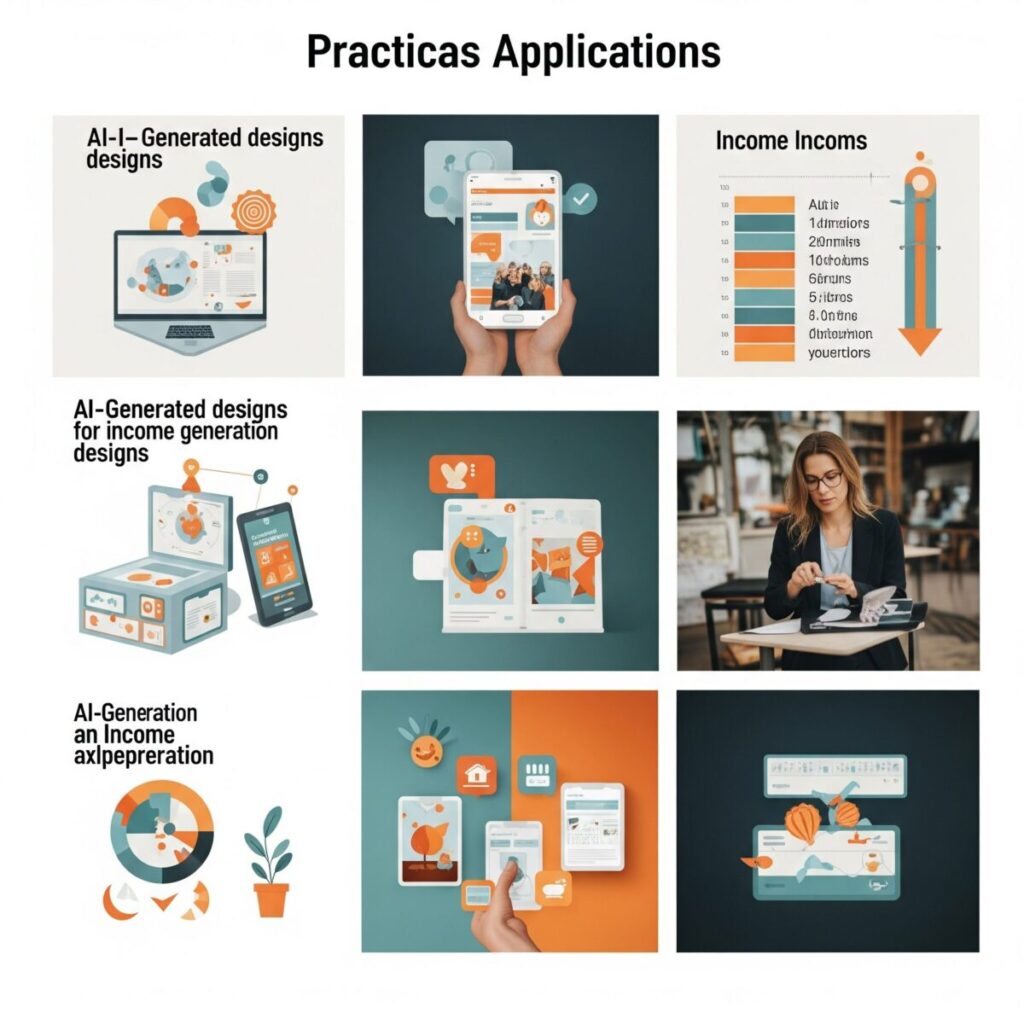
Concept: Use AI image generators to create viral, shareable content for your own social media channels, blogs, or newsletters. These visuals can then drive traffic to affiliate links, digital products you sell, or your services.
Examples:
Instagram Carousels: Visual stories featuring AI-generated art.
Quote Images: Inspiring quotes laid over beautiful AI backgrounds.
Pinterest Pins: Highly visual content that drives traffic to blogs or products.
Blog Post Illustrations: Make your articles more engaging and shareable.
YouTube Video Thumbnails & Banners: Professional visuals for your video content.
Strategy: Consistently posting high-quality, unique AI-generated content can build an audience faster than ever, creating valuable traffic that you can then monetize through various means.
DeepSeek AI vs ChatGPT vs Gemini AI — Which One to Choose?
While ChatGPT likely sparked your initial interest in AI, the landscape is rapidly evolving with powerful new contenders. Understanding their strengths can help you choose the right tool for your monetization goals.
- 🧠 ChatGPT (by OpenAI)
- Best for: General writing, ideation, content automation, brainstorming, and now surprisingly capable image generation with its direct DALL·E 3 integration (for Plus users).
- Strengths: User-friendly interface, robust conversational capabilities, powerful free and paid tiers, and seamless access to image generation within the same chat window.
- Why it matters for earning: Excellent for generating ideas, outlines, marketing copy, and now, direct image creation.
- 🔬 DeepSeek AI
- What it is: A fast-rising, powerful multimodal AI model from China, gaining traction for its open-source contributions and impressive capabilities.
- Great for: Developers and users looking for robust text and code generation, often with strong real-time search integration and creative workflow features. Its vision capabilities are making it a strong alternative for those exploring AI beyond the mainstream options.
- Ideal if: You’re keen on exploring cutting-edge alternatives to ChatGPT, especially if you have a more technical bent or need highly specialized outputs.
- 🧠 Gemini AI (by Google)
- What it is: Google’s direct competitor to ChatGPT, boasting strong multimodal capabilities (text, image, audio, video).
- Strengths: Tightly integrated with Google’s ecosystem (Docs, Sheets, Search, etc.), making it incredibly powerful for research, data analysis, and visual generation within existing workflows. Its enterprise-level offerings are particularly strong.
- Why it matters for earning: Offers advanced visual generation and multimodal understanding, making it excellent for creators who need to integrate AI visuals with data, research, or complex projects.
✅ Takeaway: While ChatGPT remains the best all-rounder for general AI tasks and accessible image generation, both DeepSeek AI and Gemini AI are bringing powerful innovation and fresh opportunities. Exploring them can be beneficial, especially for those looking to scale up visual content, integrate AI with complex data, or dive into more specialized AI applications.
Tools to Get Started (No Experience Needed)
You don’t need a massive budget or deep technical knowledge to start. Many tools offer free tiers, and the learning curve is surprisingly gentle. Here are essential tools that pair perfectly with your AI curiosity:
- ChatGPT (with DALL·E 3 integration): If you’re a Plus subscriber, this is your one-stop shop for both text and image generation. Start here for ease of use.
- Midjourney: For highly stylized, artistic, and often surreal visuals. It operates primarily through Discord. Requires a subscription for commercial use.
- Leonardo AI: A popular choice for commercial use cases, offering more control and features for specific art styles. Also has free credits to get started.
- Canva AI / Magic Media: Integrated directly into Canva, this is fantastic for quick, easy, drag-and-drop image creation within a user-friendly design environment. Perfect for social media graphics or simple designs.
- Adobe Firefly: Adobe’s generative AI offering, integrated into their creative suite. Excellent for professional-grade AI image creation, text effects, and generating commercial assets. Free credits available.
Your Workflow Strategy:
- Ideation with ChatGPT: Start by asking ChatGPT to brainstorm niche ideas for your products, write compelling product descriptions, or even generate creative prompt styles for your chosen visual aesthetic.
- Visual Creation with AI Image Tools: Feed those refined prompts into Midjourney, Leonardo AI, DALL·E, or Firefly to generate your unique images. Experiment with different prompts and styles.
- Refinement with User-Friendly Editors: Use tools like Canva or basic photo editors to add text, resize, or make minor adjustments to your AI images.
- Monetization: Upload your creations to Print-on-Demand sites, sell them on marketplaces, or integrate them into your content strategy.
A Quick Word of Caution & Important Considerations
Before diving headfirst into selling or using AI-generated content commercially, keep these crucial points in mind:
- Check License and Terms: Every AI tool has its own licensing agreement. Midjourney, Adobe Firefly, and others have specific terms regarding commercial use of images generated with their free or paid tiers. Always read these carefully to ensure you’re compliant.
- Copyright Ambiguity: The legal landscape around AI art copyright is still evolving. Currently, in many jurisdictions (like the US), purely AI-generated art may not be eligible for copyright protection unless there’s significant human creative input. However, this doesn’t prevent you from selling it or using it for commercial purposes, as long as you’re aware of the nuances.
- Avoid Infringement: Never generate images that clearly mimic copyrighted characters, existing brands, or famous real people without explicit permission. AI models are trained on vast datasets, and accidental similarity can occur. Aim for originality.
- Aim for Originality & Human Touch: While AI does the heavy lifting, your unique prompts, chosen styles, and the way you curate and apply the images add significant value. Combine your creativity with AI; don’t just copy-paste generic prompts. Your discerning eye and creative direction are what truly make your AI art valuable.
Your Curiosity Was the First Step — Now Let AI Work for You
In 2023 and 2024, millions worldwide eagerly asked: “What can ChatGPT do?” They explored its conversational prowess, its coding abilities, and its capacity for automating text tasks.
In 2025, the question is shifting, and more people will be asking: “How can I earn with AI?”
The exciting answer lies directly in your initial curiosity and your willingness to explore new, groundbreaking tools. Whether it’s through launching your own line of Print-on-Demand products, offering AI-powered design services as a freelancer, creating and selling digital art packs, or simply building an engaging content brand with stunning visuals — the powerful combination of ChatGPT for ideation and AI-generated images for creation opens up an unprecedented world of income possibilities.
Final Thought:
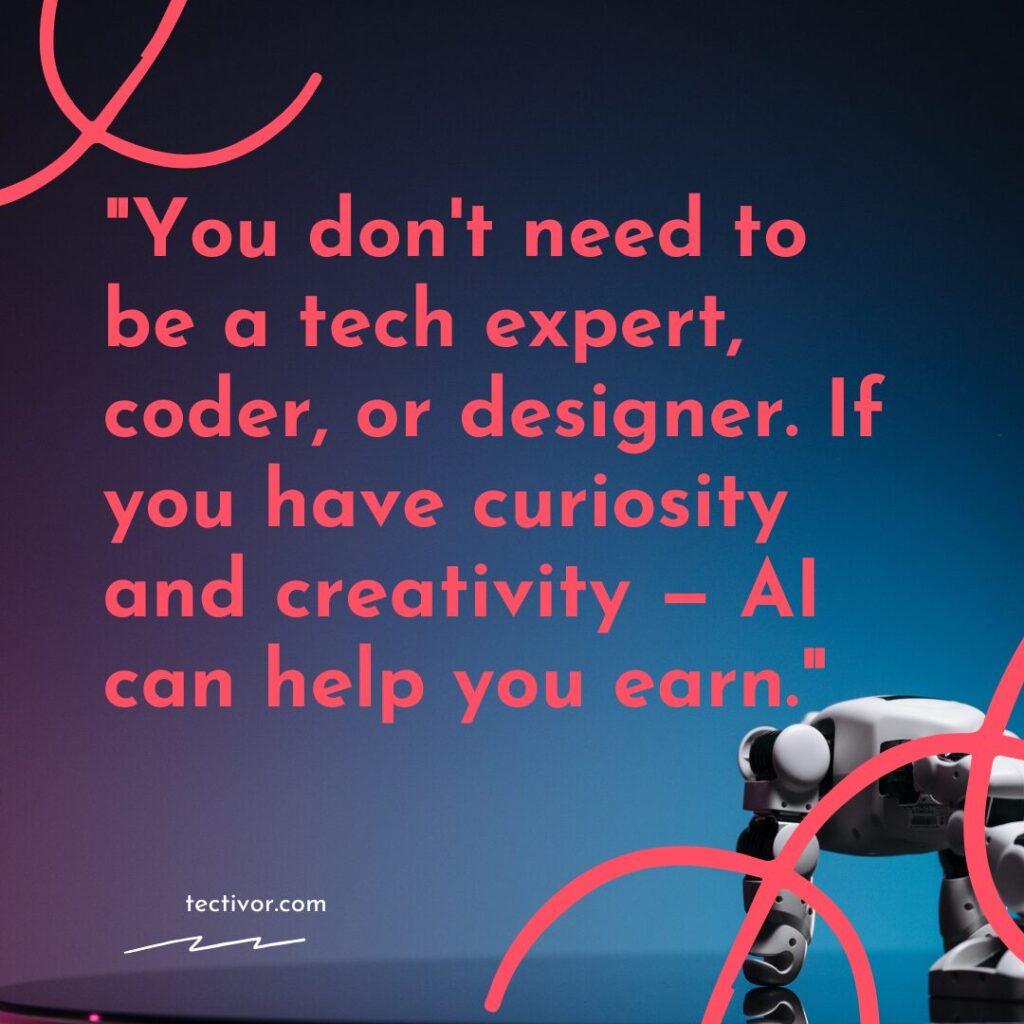
You don’t need to be a tech expert, a complex coder, or a seasoned designer to tap into this lucrative frontier. If you possess curiosity and a spark of creativity, AI can become your most powerful partner in earning money. Start with ChatGPT to refine your ideas, then unlock the immense power of AI images, and turn your 2025 into a visual success story. The future of earning is here, and it’s more accessible than ever.
💡Stay ahead of the future! Follow us on:
Facebook | LinkedIn
Frequently Asked Questions (FAQs)
Q1: Do I need to be a skilled artist or coder to make money with AI images? A1: Absolutely not! The beauty of modern AI image generators is their accessibility. You don’t need to draw, paint, or code. If you can type descriptive text prompts, you can create stunning visuals. The article provides examples of how even beginners can leverage these tools.
Q2: Is AI-generated art copyrighted? Can I legally sell it? A2: The legal landscape around AI art copyright is still evolving. In many jurisdictions (like the U.S. Copyright Office), purely AI-generated art may not be eligible for copyright protection because it lacks “human authorship.” However, this doesn’t prevent you from selling it or using it commercially, as long as you understand the nuances. Many platforms and tools allow commercial use under their terms. For strongest protection, ensure you add significant human creative input (e.g., editing, combining with other elements, unique curation) to the AI-generated output. Always check the specific tool’s terms of service for commercial usage rights.
Q3: What are the best free AI image generators to start earning money? A3: While many tools offer paid tiers for advanced features or higher usage, several provide generous free options perfect for beginners. Canva’s Magic Media offers free generations, Leonardo AI gives daily free credits, and Adobe Firefly often has a free credit system. Microsoft Designer’s Image Creator (powered by DALL-E 3) is also often available for free. These are great starting points to experiment without upfront investment.
Q4: How quickly can I expect to start earning money with AI images? A4: This varies greatly depending on your chosen monetization method, effort, and marketing. Some methods, like selling Print-on-Demand products or digital downloads, can potentially generate income within weeks or a few months if your designs resonate with an audience and you actively promote them. Freelancing income depends on securing clients. It’s not a “get rich quick” scheme, but consistent effort and smart strategies can yield results.
Q5: Can ChatGPT really help me with AI image generation? A5: Yes, absolutely! ChatGPT is an incredible tool for prompt engineering. You can use it to:
- Brainstorm diverse ideas for images based on a theme.
- Expand a simple concept into a detailed, evocative prompt with specific artistic styles, lighting, and composition.
- Generate variations of prompts to get different outputs from your image generator.
- Write compelling product descriptions or social media captions for your AI-generated visuals.
Q6: What’s the main difference between Midjourney, Leonardo AI, and Adobe Firefly? A6:
- Midjourney: Known for its highly aesthetic, often painterly or fantastical outputs. It’s a favorite for artistic and conceptual imagery. It’s primarily Discord-based.
- Leonardo AI: Offers more granular control over image generation, including custom models, making it popular for users looking to create consistent characters or specific styles for commercial projects. It often provides more free credits than others.
- Adobe Firefly: Integrates seamlessly into Adobe’s professional creative suite (Photoshop, Illustrator), making it ideal for designers who want to incorporate AI into their existing workflows. It emphasizes commercially safe content.
Q7: Are there any ethical concerns I should be aware of when using AI for commercial purposes? A7: Yes. Beyond copyright, consider the source data used to train the AI (some artists are concerned their work was used without consent/compensation). Always strive for originality and avoid directly replicating existing copyrighted characters, logos, or styles. Transparency with your audience about your use of AI can also build trust. Focus on using AI as a tool to augment your unique creativity, rather than simply automate it.


